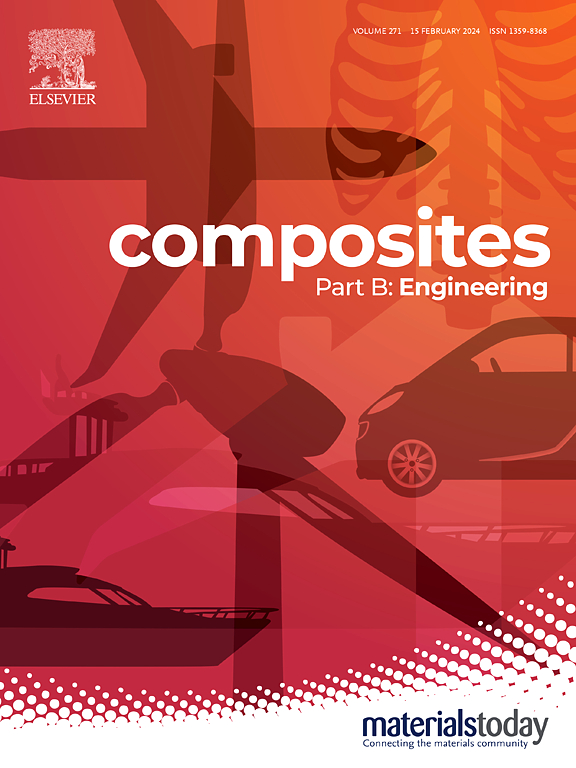Gradient structure regulation of liquid metal composite based on synergistic effect of metal coordination and acoustic field for soft electronics
IF 12.7
1区 材料科学
Q1 ENGINEERING, MULTIDISCIPLINARY
引用次数: 0
Abstract
As candidates, liquid metal composites (LMCs) exhibit tunable physical and functional properties at various scales, broadening applications in flexible electronics. Herein, by the synergistic effect of metal coordination and acoustic field, a liquid metal composite (LMEPC) with tunable gradient structure is prepared. The gradient and bicontinuous structures of LMPEC result in the initial thermal and electrical conductivity anisotropy without pre-activation. The size of LM particles (LMPs) can be controlled from nano to micro scale due to the synergistic effect of metal coordination and acoustic field application, resulting in a transformation of the gradient structure. LMEPC exhibits enhanced electrical conductivity (0.0540 Ω), thermal conductivity (1.317 W K−1 m−1), mechanical property (1847.3 MPa), and programmable shape performance. These capabilities enable the design of multifunctional electronics. This work provides a new strategy to control the gradient structure of LMCs by the induction of metal coordination to broaden the horizon of applications.

基于金属配位与软电子声场协同效应的液态金属复合材料梯度结构调节
作为候选者,液态金属复合材料(lmc)在各种尺度上表现出可调的物理和功能特性,扩大了在柔性电子领域的应用。利用金属配位和声场的协同作用,制备了具有可调梯度结构的液态金属复合材料(LMEPC)。LMPEC的梯度和双连续结构导致其在没有预活化的情况下具有初始的导热和电导率各向异性。由于金属配位和声场应用的协同作用,LM颗粒的尺寸可以从纳米尺度控制到微观尺度,从而导致梯度结构的转变。LMEPC具有增强的导电性(0.0540 Ω)、导热性(1.317 W K−1 m−1)、机械性能(1847.3 MPa)和可编程形状性能。这些能力使多功能电子产品的设计成为可能。本研究提供了一种通过诱导金属配位来控制lmc梯度结构的新策略,拓宽了lmc的应用领域。
本文章由计算机程序翻译,如有差异,请以英文原文为准。
求助全文
约1分钟内获得全文
求助全文
来源期刊

Composites Part B: Engineering
工程技术-材料科学:复合
CiteScore
24.40
自引率
11.50%
发文量
784
审稿时长
21 days
期刊介绍:
Composites Part B: Engineering is a journal that publishes impactful research of high quality on composite materials. This research is supported by fundamental mechanics and materials science and engineering approaches. The targeted research can cover a wide range of length scales, ranging from nano to micro and meso, and even to the full product and structure level. The journal specifically focuses on engineering applications that involve high performance composites. These applications can range from low volume and high cost to high volume and low cost composite development.
The main goal of the journal is to provide a platform for the prompt publication of original and high quality research. The emphasis is on design, development, modeling, validation, and manufacturing of engineering details and concepts. The journal welcomes both basic research papers and proposals for review articles. Authors are encouraged to address challenges across various application areas. These areas include, but are not limited to, aerospace, automotive, and other surface transportation. The journal also covers energy-related applications, with a focus on renewable energy. Other application areas include infrastructure, off-shore and maritime projects, health care technology, and recreational products.
 求助内容:
求助内容: 应助结果提醒方式:
应助结果提醒方式:


